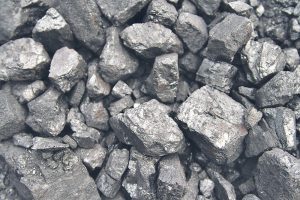
Geneva, Switzerland, 31 July 2017 – Despite soft Chinese consumption and low prices for most of the year, a late surge meant the iron ore industry saw gains in production and exports.
The iron ore industry saw a marked improvement last year after the slower growth, lower prices and squeezed profit margins suffered in 2015, according to the new UNCTAD Iron Ore Market Report.
The report shows the key indicators of demand and supply, seaborne trade and price, all made gains through the year and says the market outlook is steady.
“The market for base metals such as iron ore is a yardstick for the global economy, and in recent years it has fluctuated closely with the state of emerging and developing countries’ economies,” said Ms. Yanchun Zhang, Chief of UNCTAD’s Commodity Policy Implementation and Outreach Section.
“The report’s comprehensive analysis of the global iron ore market will be useful for both professionals interested in the iron ore market but also for developing economies with huge needs to import the metal for domestic industrial production.”
Although Chinese consumption remained relatively low, and prices did not improve for much of 2016, the market started to improve late in the year, with prices exceeding US$80/dry metric ton (dmt in December 2016.
Global iron ore production grew 5% year-on-year in 2016, according to the report, hitting a total of 2,106 million tons (Mt). This was primarily driven by an additional 30 Mt of direct shipping ore from Australia, which was the major source of new fine-products entering the Chinese market.
Iron ore exports exceeded 1,513 Mt in 2016, compared with under 1,439 Mt in 2015, and the seaborne market was more or less balanced. The net increase in global trade was led by Australia, which contributed 44 Mt of incremental seaborne supply. The predominant products that entered the market were Pilbara blend fines and Carajas fines.
Producers of iron ore have reduced mining costs substantially over the past four years, says the report, and the mining industry as a whole now spends US$22/dmt less than it did in 2013 due to tightened capital controls, renegotiated contracts and the exit of high cost supply. The production-weighted average cost for the seaborne market was only US$34/dmt in 2016, and the lowest cost producer achieved US$23/dmt.
Iron ore exploration budgets fell in 2016 for the fourth consecutive year, with the estimated US$685 million expenditure representing a decline of US$460 million from 2015. Most of the fall can be attributed to Australia and China, which together accounted for almost half of the global decline. The annual exploration budget for iron ore is now down 83% from the peak of US$3.98 billion in 2012.
In Ghana, at Sheini, near Tamale, 616 km north of the capital, in the Northern Region alone, the official confirmed that there is a proven reserve of 1.27 billion metric tones of iron ore, while at Oppon Manso, in the Western Region, 150 million metric tones, Pudo in the Upper West Region, five million metric tones
The Oppon Manso iron ore reserves were discovered by the Ghana Geological Survey in 1963 located on 15 hills over 24km strike . The Geological Survey reported a mineralized estimate to 10m depth, of approximately 150 million long tons with an iron content between 43-56 percent Fe.
There are also reserves of iron ore in Akpafu, 234 km north-east of the capital which also needs more geological work to establish. This particular ore deposit might be easier to find since the locals had used it in the past in making pots and farming tools.
Additionally, 200 million metric tones of iron ore deposits in Kibi, 92 km north of the capital can however not be developed at the moment since it occupies a forest reserve and the source of the Birim River which is the main source of treated water for the capital.
Instructively, the United Nations Conference on Trade and Development’s (UNCTAD) Trust Fund Project on Iron Ore Information provides up-to-date statistics and analysis on developments in the world market for iron ore The Trust Fund, with S&P Global Market Intelligence as its information provider, produces two unique products; The Iron Ore Market Report every year and the Iron Ore Statistics Database.
African Eye Report


